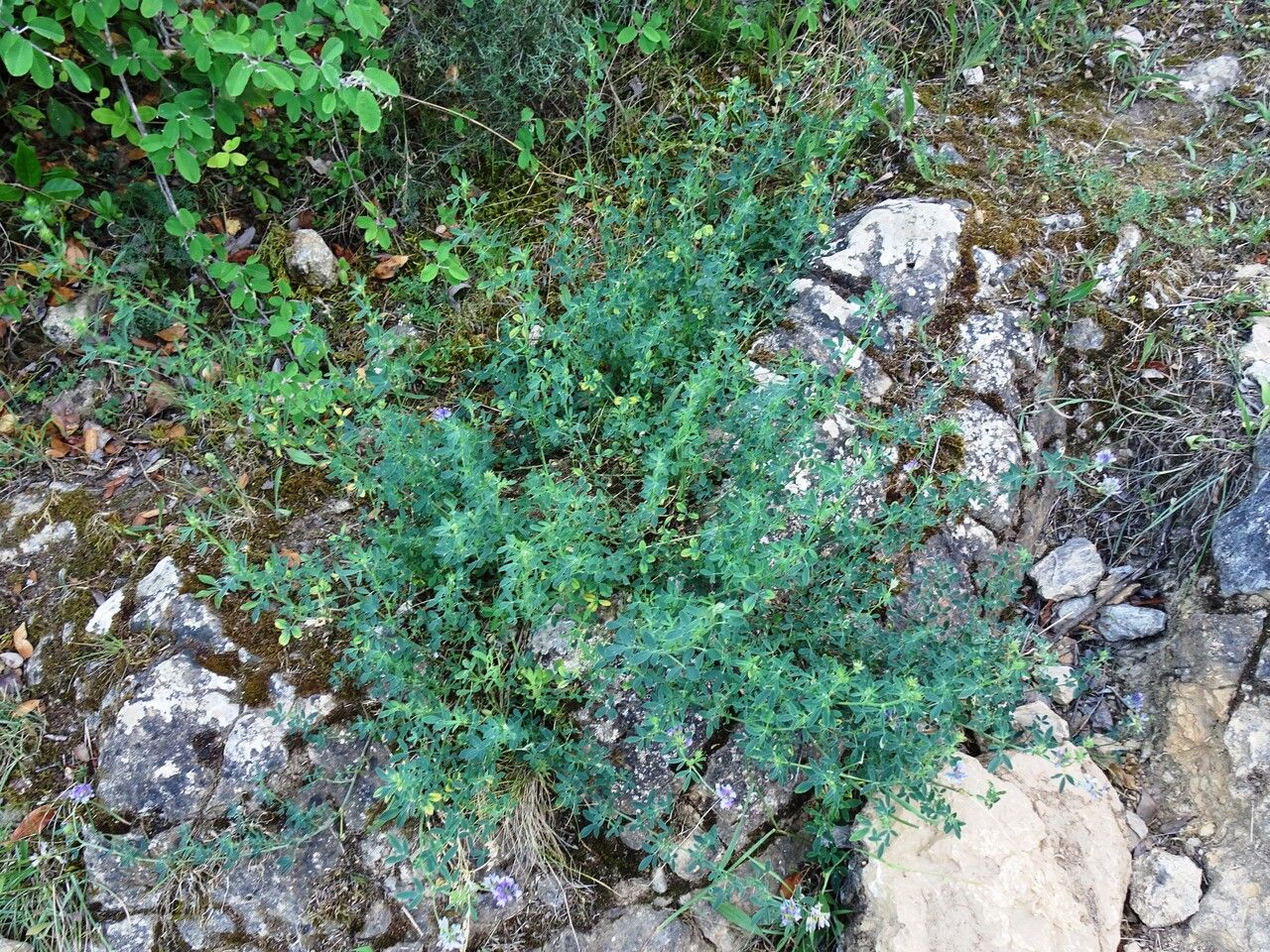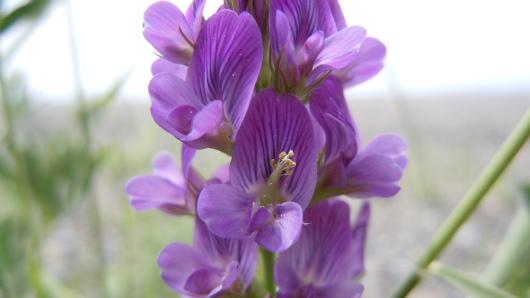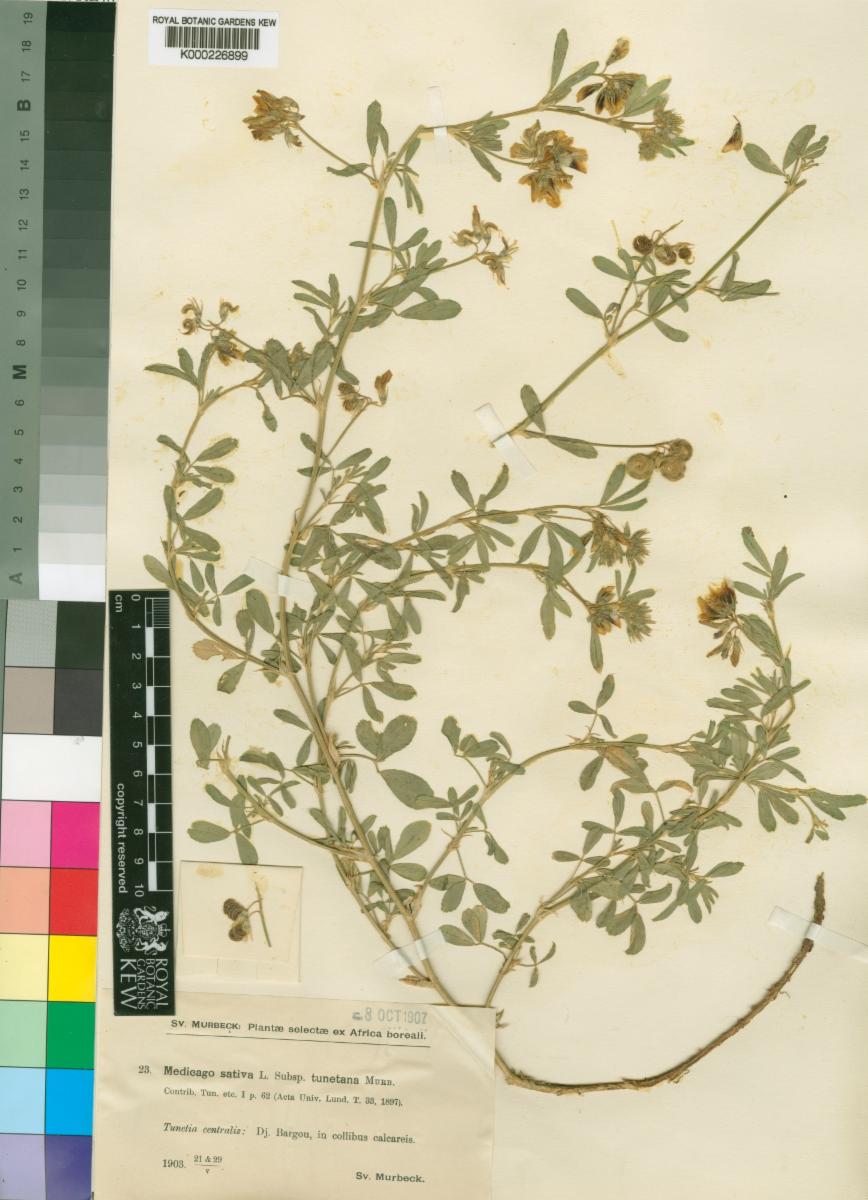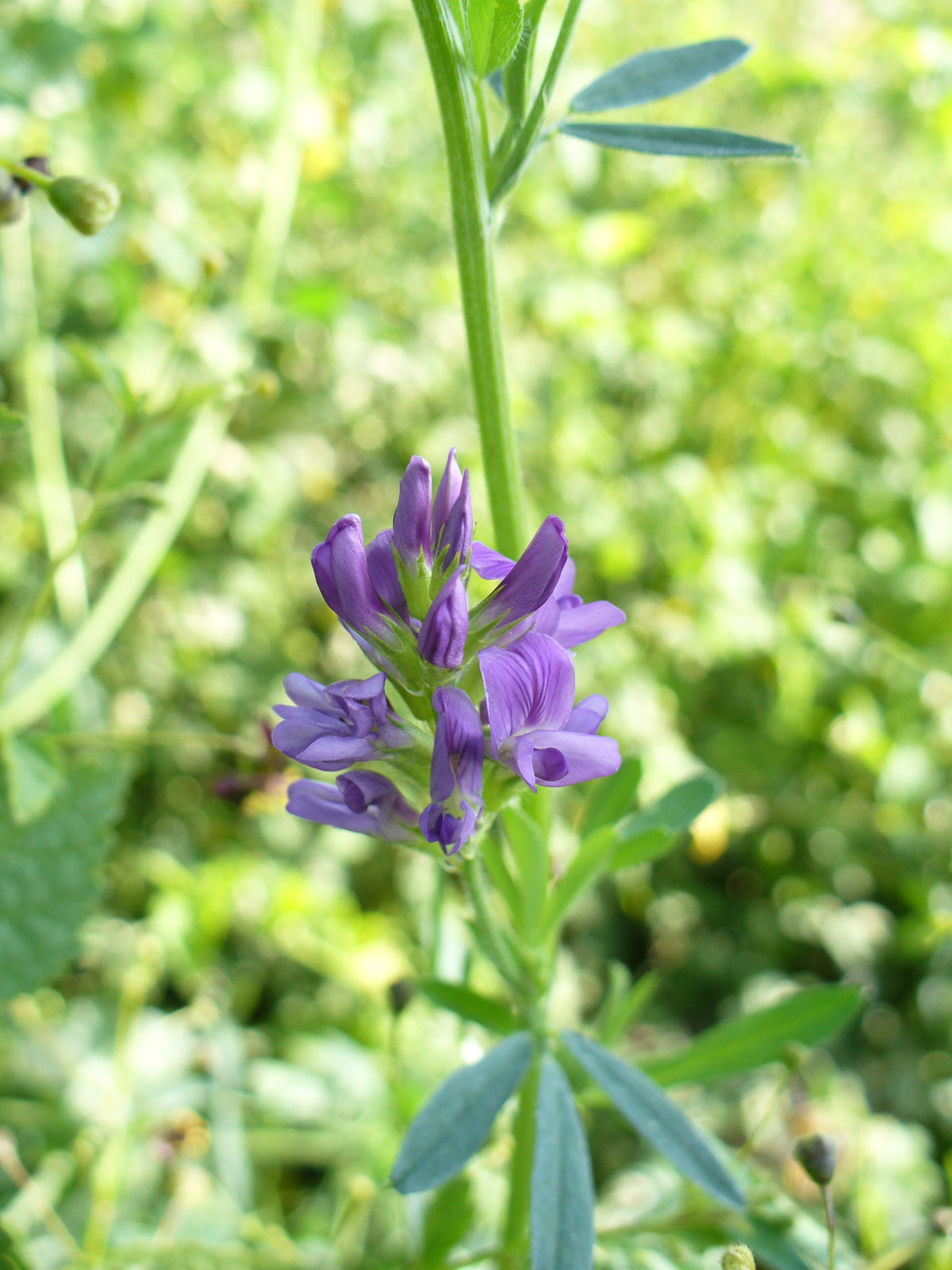Alfalfa
medicago sativa
Also known as: ["Lucerne","Purple Medic"]
Overview
A perennial flowering plant in the legume family, widely cultivated as forage for livestock due to its high nutritional value.
Benefits & Perks
["edible fruits","medicinal use","wildlife attractant (bees, butterflies, birds)","drought tolerant"]
Botanical Classification
| Phylum: | Magnoliophyta |
| Class: | Magnoliopsida |
| Order: | Fabales |
| Family: | Fabaceae |
| Genus: | Medicago |
| Botanical Name: | Medicago sativa |
Plant Characteristics
Basic Information
- Category: Herbs & Weeds
- Suitable Location: open field or pasture, or container in full sun
- Suitable For:
- Is Weed: No
- Allergenicity: low
Environmental Needs
- Climate: {"temperatureRange":"–40–40°C"}
- Hardiness: {"zones":"3–9"}
- Misting: rarely required, only if ambient humidity is very low
- Drainage: Fast-draining.
- Soil Type: Well-draining loam with organic matter. Alfalfa prefers slightly alkaline conditions.
Maintenance Level
- Maintenance Level: moderate
- Toughness Level: high
- Pruning Frequency: As needed, typically after flowering or in late winter/early spring.
- Pruning Intensity: Light to moderate.
Care Details
Ideal Sunlight Coverage:
Full sun (6–8 hours of direct sunlight daily). Tolerates partial shade but may produce fewer leaves.
Sunlight Tolerance Tips:
Acclimate plants gradually to intense sunlight if moved from shade. Avoid placing in hot, reflective surfaces that can scorch leaves. Outdoor placement is ideal for full sun exposure.
Care Requirements
Care Difficulty
easymoderate
Sunlight
full sun
Rotate plants for even growth; use shade cloth in extreme heat; ensure unobstructed sunlight.
Watering
every 7–14 days, depending on soil moisture and climate
Water thoroughly to encourage deep roots; allow soil to dry slightly between waterings; avoid overhead watering to prevent fungal issues.
Soil
well-drained, loamy soil with moderate fertility
pH: 6.0–7.5 (slightly acidic to slightly alkaline).
Ensure soil is loose and crumbly; avoid waterlogged conditions; test pH annually.
Temperature
Prefers 60–80°F (15–27°C). Tolerates cold down to 0°F (-18°C) but thrives in moderate temperatures.
Protect from frost; avoid sudden temperature swings; monitor soil temperature for root health.
Fertilizing
every 4–6 weeks during active growth
Avoid over-fertilizing to prevent root burn; water after fertilizing to distribute nutrients; use organic options like compost for slow release.
Propagation
Methods
Seeds or root cuttings.
Step-by-Step Propagation Guide
- Sow seeds 1/4 inch deep.
- Keep moist. For root cuttings, take 2–3 inch sections, dip in hormone, plant horizontally, and keep humid.
Best Time: Spring or early summer for seeds; late summer for root cuttings.
Environment
Warm (65–75°F), high humidity, and partial shade for root cuttings; full sun for seedlings once established.
Medium
Well-draining seed starting mix or sandy loam for root cuttings.
Hormone
Not typically required for seeds; rooting hormone can aid root cuttings.
Timeline
Seeds germinate in 7–14 days; root cuttings root in 4–6 weeks.
Tools Needed
Seed trays, rooting hormone, pruners, misting bottle, heating mat (optional).
Quick Tips
Sow seeds thickly as germination can be inconsistent; use bottom heat for faster germination; protect root cuttings from drying out.
Pruning & Repotting
Pruning Guide
Method
Cut back dead or weak stems to the base. Thin overcrowded areas to improve air circulation.
Pruning Plan
Minimal pruning needed. Focus on removing dead or damaged stems to maintain vigor and airflow.
Tools
Pruning shears, gloves, disinfectant.
Checklist
Disinfect tools; prune dead/damaged growth; avoid over-pruning; clean up debris afterward.
Repotting Guide
Best Season
Early spring before active growth begins.
Pot Size
One size larger pot (e.g., +2 inches in diameter).
Method
Remove plant gently, trim roots if necessary, place in a new pot with fresh soil, and water lightly.
Suggestions
Repot every 2–3 years or when roots fill the container. Young plants may need repotting annually.
Checklist
Choose appropriate pot size; prepare fresh soil mix; handle roots carefully; water after repotting.
Advanced Care Tips
Watering Mastery
Watering Checklist
Check soil moisture before watering; water deeply; ensure proper drainage; adjust for weather conditions.
How to Apply Water Properly
Water at the base of the plant, ensuring moisture reaches the root zone. Apply until water drains from the bottom, then stop to prevent waterlogging.
Watering Schedule Tips
Water deeply once or twice a week during active growth, reducing frequency in winter. Adjust based on rainfall and soil moisture retention.
Soil Improvement
Add compost or well-rotted manure for fertility; mix sand or perlite for drainage; adjust pH with lime or sulfur if needed.
Temperature Stress Management
Signs of Temperature Issues
Chlorosis or browning of leaves in extreme heat; stunted growth or dieback in prolonged cold.
Cold Stress
Slows growth and may cause leaf drop or dormancy. Roots can freeze in poorly insulated soil.
Solution: Mulch heavily around the base; provide wind protection; avoid watering before frost to prevent ice damage.
Hot Stress
Wilting, leaf scorch, or reduced photosynthesis in excessive heat. May go dormant if watered improperly.
Solution: Water deeply in early morning; provide partial shade during peak heat; increase air circulation.
Fertilizing Guide
Fertilizing Checklist
Check soil nutrient levels; apply fertilizer at recommended rates; water after application; monitor plant response.
Fertilizing Method
Use balanced, slow-release fertilizer in early spring. Side-dress with nitrogen-rich fertilizer during active growth. Reduce or stop fertilizing in late fall.
Common Problems & Solutions
Toxicity Warning
Cats
Non-toxicAlfalfa is not considered toxic to cats and can be a safe addition to their diet in small quantities.
⚡ Toxic If:
Generally non-toxic
Dogs
Non-toxicAlfalfa is not considered toxic to dogs and is often included in commercial dog foods as a source of nutrients.
⚡ Toxic If:
Generally non-toxic
Humans
Non-toxicMedicago sativa, commonly known as alfalfa, is generally considered non-toxic to humans. It is widely consumed as a food source and is known for its nutritional benefits.
⚡ Toxic If:
Generally non-toxic
Frequently Asked Questions
Q: Is alfalfa safe for human consumption?
A: Yes, alfalfa is safe for human consumption and is often used in salads, sprouts, and supplements.
Q: Can alfalfa be grown in containers?
A: Yes, alfalfa can be grown in containers, but it requires sufficient space for root development.
Q: Does alfalfa require a lot of water?
A: Alfalfa is drought-tolerant but performs best with regular watering, especially during dry periods.
Quick Reference
| Family: | Fabaceae |
| Care: | easy |
| Light: | full sun |
| Water: | every 7–14 days, depending o |
Get Expert Care Tips
Download the Plantious app for personalized care reminders and plant identification!
Google Play App Store








